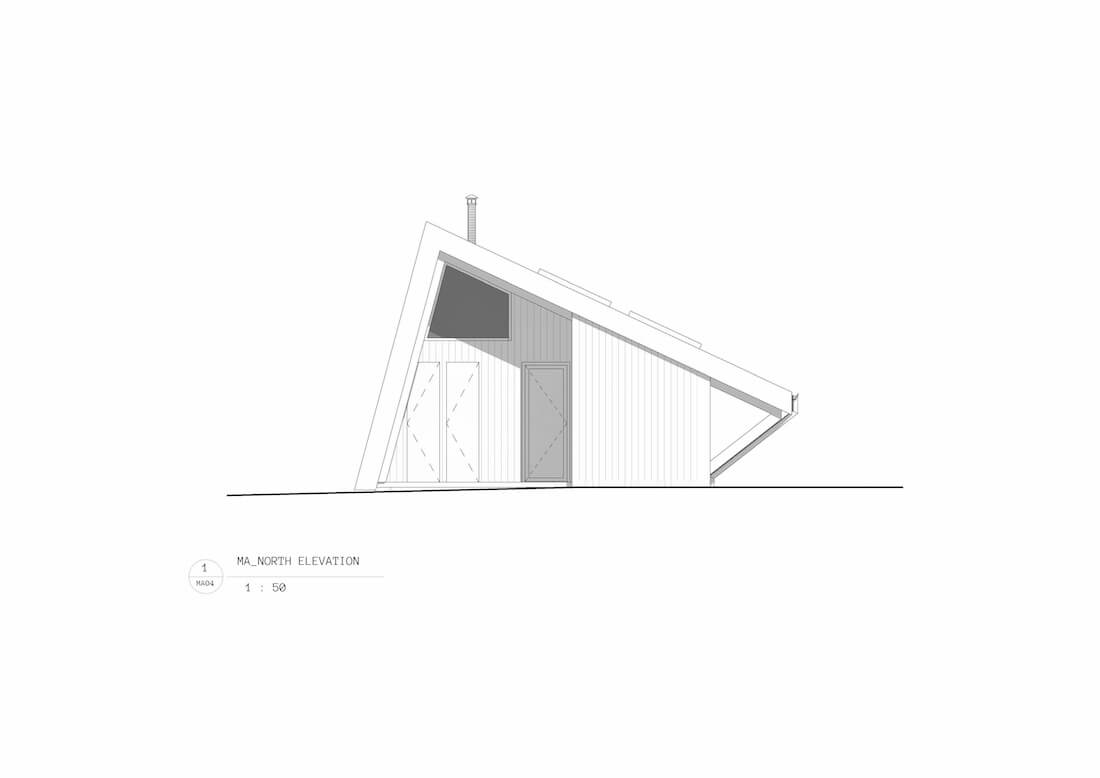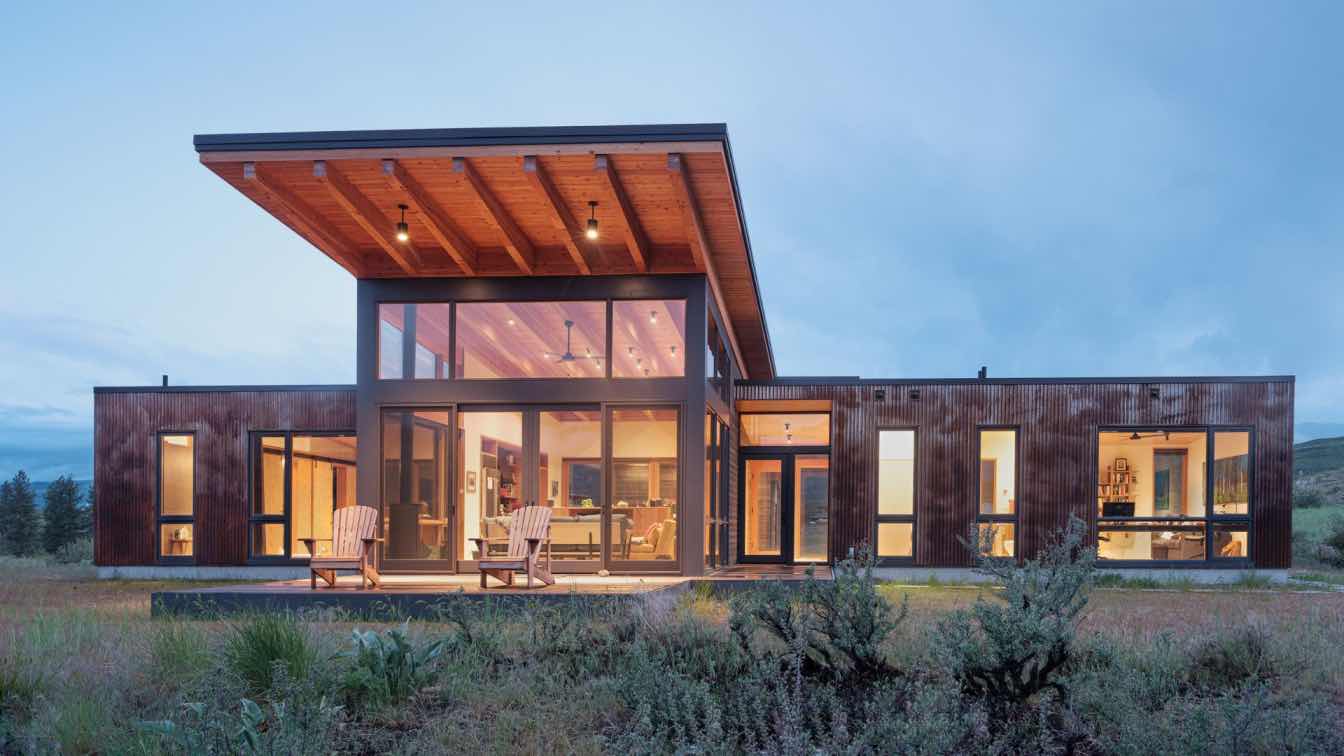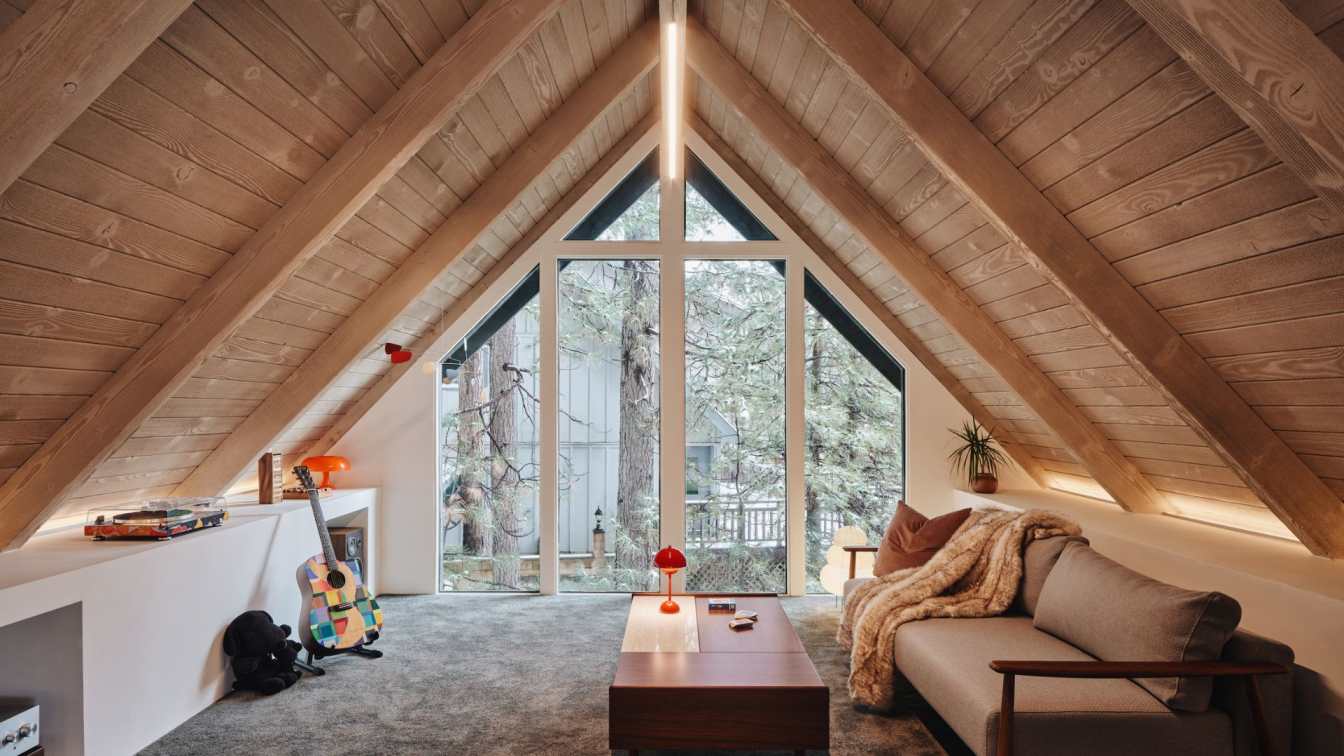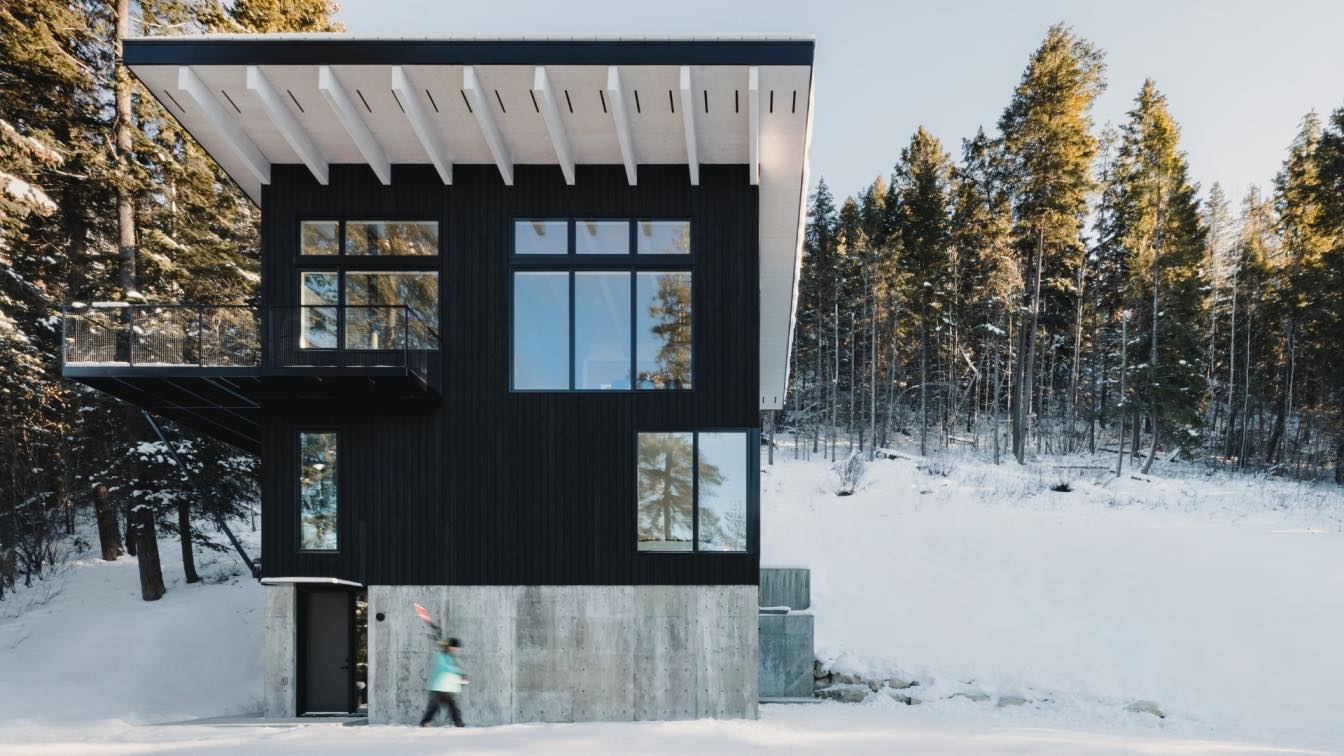Cameron Anderson Architects: Gilay Estate is an off grid, luxury farm stay accommodation building located just outside of Quirindi on the Liverpool Plans in regional NSW. The building is sited on a gently undulating site with its elevated position offering uninterrupted views of the Liverpool Plains. The small building has an internal area of just 40m2 and comprises a wrapping sheet metal roof form that protects the building from the elements and mimics the enclosure of a tent structure. Extensive double glazing maximises Southern views while Western and Northern glazing are protected by roof overhangs to eliminate Summer sun. The building incorporates a 6.4kw off grid solar system with 11.4kw of battery storage and utilises 100% rainwater for use within the building stored within a 60,000L water tank. Consultation was carried out with the local aboriginal lands council throughout the design process. Charred timber cladding was utilised as a way of representing traditional burning and regeneration while also assisting in letting the building disappear into the landscape, while the warm timber interior contrasts the dark exterior to represent regrowth and healing. The building is largely open plan with a sleeping space within the main living area. A large desk maximises opportunities for remote working and a small private bathroom is tucked away but offers Western views. A feature of the roof is a large curved cutaway which helps maximise views to the West while still providing adequate overhang for summer shading.
What were the key challenges?
Key challenges include the site being reasonably remote in terms of services and trades which required a skilled builder and elements of prefabrication for the main structural system. The building also needed to function as an off grid building so utilises off grid solar and extensive rainwater reuse.

What are the sustainability features?
6.4kw off grid solar system with 11.4kw of battery storage
60,000L of rainwater storage
Double glazed windows and doors
Sustainable materials
Large overhangs for summer shading
Thermal mass
Native landscape plantings
Waste water treatment
use of off cut building materials for kitchen joinery
What was the brief?
To provide a unique, off grid tourism accommodation experience for couples on a large working property in the Liverpool Plains region of NSW and to establish the town of Quirindi as a tourism destination

























